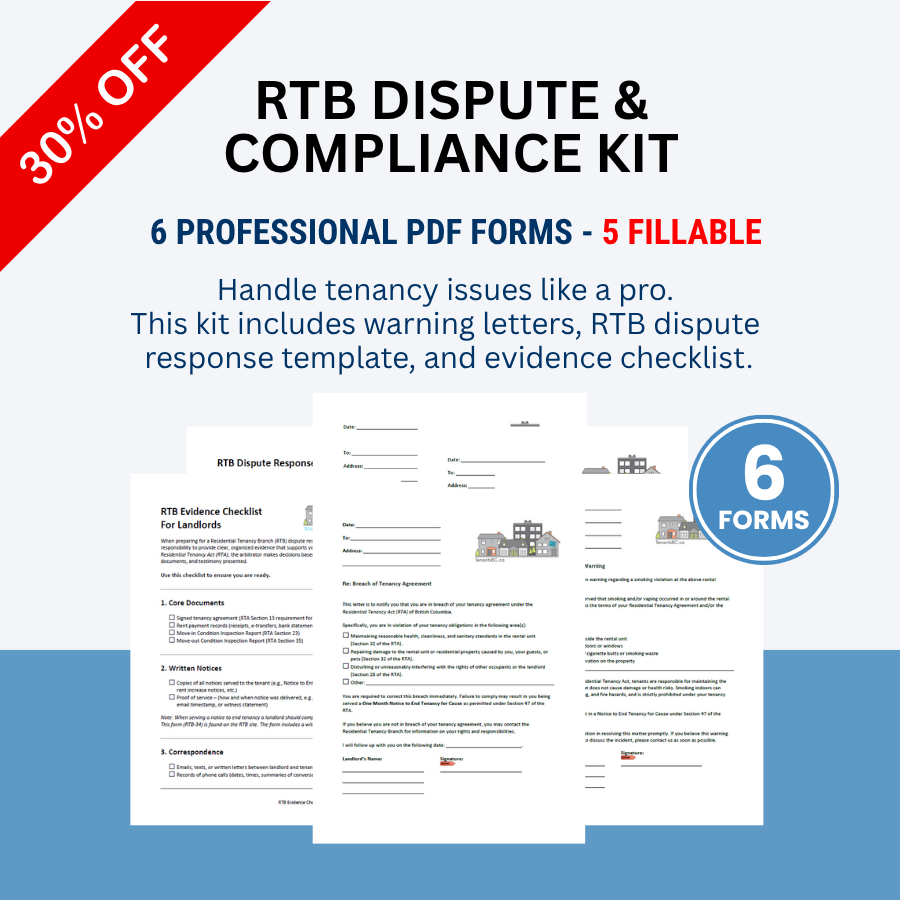As a British Columbia landlord, you’ve likely encountered this scenario: a promising rental applicant with stable income and a clean background check, but they have zero landlord references. Why? They’ve been homeowners for years and are now transitioning back to renting due to divorce, downsizing, job relocation, or financial circumstances.
While the absence of rental history might seem like a red flag, former homeowners can actually make excellent tenants. The key is knowing how to properly vet them using alternative verification methods that comply with BC’s Residential Tenancy Act.
Why Former Homeowners Become Renters
Understanding the “why” behind their housing transition can provide valuable context:
- Life changes: Divorce, separation, or death of a spouse
- Downsizing: Empty nesters seeking less maintenance responsibility
- Financial restructuring: Choosing to rent while rebuilding credit or savings
- Job relocation: Temporary or permanent moves for work
- Market timing: Selling high and waiting to buy again
- Lifestyle preference: Wanting flexibility without homeownership responsibilities
Most of these reasons indicate responsible decision-making rather than financial distress.
Alternative Verification Methods for Former Homeowners
1. Property Ownership Documentation
Request proof of their previous homeownership:
- Property tax assessments from the past 2 years
- Utility bills in their name (hydro, gas, internet, cable)
- Home insurance policies
- Real estate listing or sale documentation
This establishes they were legitimate property owners, not just claiming to be.
2. Financial Responsibility Indicators
Former homeowners should demonstrate financial management skills:
- Credit report and score (with their consent)
- Property tax payment history
- Homeowner insurance payment records
- Strata fee payment history (if applicable)
3. Employment and Income Verification
Standard employment verification becomes even more critical:
- Pay stubs for the last 3 months
- Employment letter confirming position and salary
4. Character References
Since you can’t get landlord references, expand your reference network:
- Professional references (supervisors, colleagues, business partners)
- Personal references (friends, neighbors, community members)
- Service provider references (accountant, lawyer, financial advisor)
- Previous neighbors who can speak to how they maintained their property
Red Flags to Watch For
Even with former homeowners, certain warning signs warrant extra scrutiny:
Financial Red Flags
- Recent bankruptcy or consumer proposal
- Significant credit score drops in recent months
- Irregular employment history during homeownership period
- Reluctance to provide documentation
- Inconsistent stories about why they’re now renting
Behavioral Red Flags
- Evasive answers about their homeownership experience
- Pressure to rush the application process
- Unwillingness to provide references
- Poor communication or unprofessional behavior
- Unrealistic expectations about rental terms
BC-Specific Considerations
Residential Tenancy Act Compliance
Ensure your vetting process follows BC’s RTA requirements:
- Credit check consent: Must be written and specific
- Information requests: Must be reasonable and relevant
- Discrimination prevention: Cannot discriminate based on protected characteristics
Privacy Considerations
Under BC’s Personal Information Protection Act:
- Only collect information necessary for tenancy decisions
- Obtain clear consent for credit and reference checks
- Securely store and dispose of personal information
- Be transparent about how information will be used
Creating a Comprehensive Screening Process
Step 1: Initial Application Review
- Complete rental application
- Government-issued photo ID
- Proof of income documents
- Initial reference contact information
Step 2: Documentation Verification
- Property ownership proof
- Financial responsibility evidence
- Employment verification
- Character reference checks
Step 3: Interview Process
Conduct a thorough interview covering:
- Reasons for transitioning from ownership to renting
- Their expectations as tenants
- Previous property maintenance experience
- Long-term housing plans
Step 4: Final Assessment
Weigh all factors:
- Financial stability and payment history
- Character references and behavior
- Compatibility with your property and expectations
- Overall risk assessment
Questions to Ask Former Homeowner Applicants
About Their Homeownership Experience
- “How long did you own your previous home?”
- “What prompted your decision to sell and return to renting?”
- “Can you provide documentation of your property ownership?”
- “How did you handle property maintenance and repairs?”
About Financial Management
- “Can you provide proof of consistent mortgage payments?”
- “How did you manage property taxes and insurance?”
- “What was your experience with budgeting for home maintenance?”
About Their Rental Expectations
- “What are you looking for in a rental property?”
- “How long do you plan to rent?”
- “Are you familiar with tenant responsibilities under the RTA?”
- “What’s your timeline for potentially buying again?”
Making the Final Decision
Positive Indicators
- Comprehensive documentation provided willingly
- Consistent financial history during homeownership
- Reasonable explanation for transitioning to renting
- Strong character references
- Professional communication throughout process
When to Proceed with Caution
- Incomplete or reluctant documentation
- Recent financial difficulties
- Vague explanations for housing transition
- Poor references or evasive behavior
- Unrealistic expectations about rental arrangements
Documentation and Record Keeping
Maintain detailed records of your vetting process:
- All application materials and supporting documents
- Reference check notes and contact information
- Credit report and consent forms
- Decision rationale and supporting evidence
This documentation protects you legally and helps refine your screening process for future applicants.
Conclusion
Former homeowners can make excellent tenants when properly vetted. Their property ownership experience often translates to better property care, financial responsibility, and understanding of maintenance needs. The key is adapting your screening process to focus on alternative verification methods while maintaining thorough due diligence.
By following BC’s legal requirements and using comprehensive alternative verification methods, you can confidently evaluate former homeowners and make informed tenancy decisions. Remember, the goal isn’t to find reasons to reject applicants, but to gather sufficient information to assess their suitability as responsible tenants.
The transition from homeowner to renter doesn’t indicate poor financial management—it often reflects thoughtful decision-making based on changing life circumstances. With proper vetting, these applicants can become some of your most reliable and property-conscious tenants.












